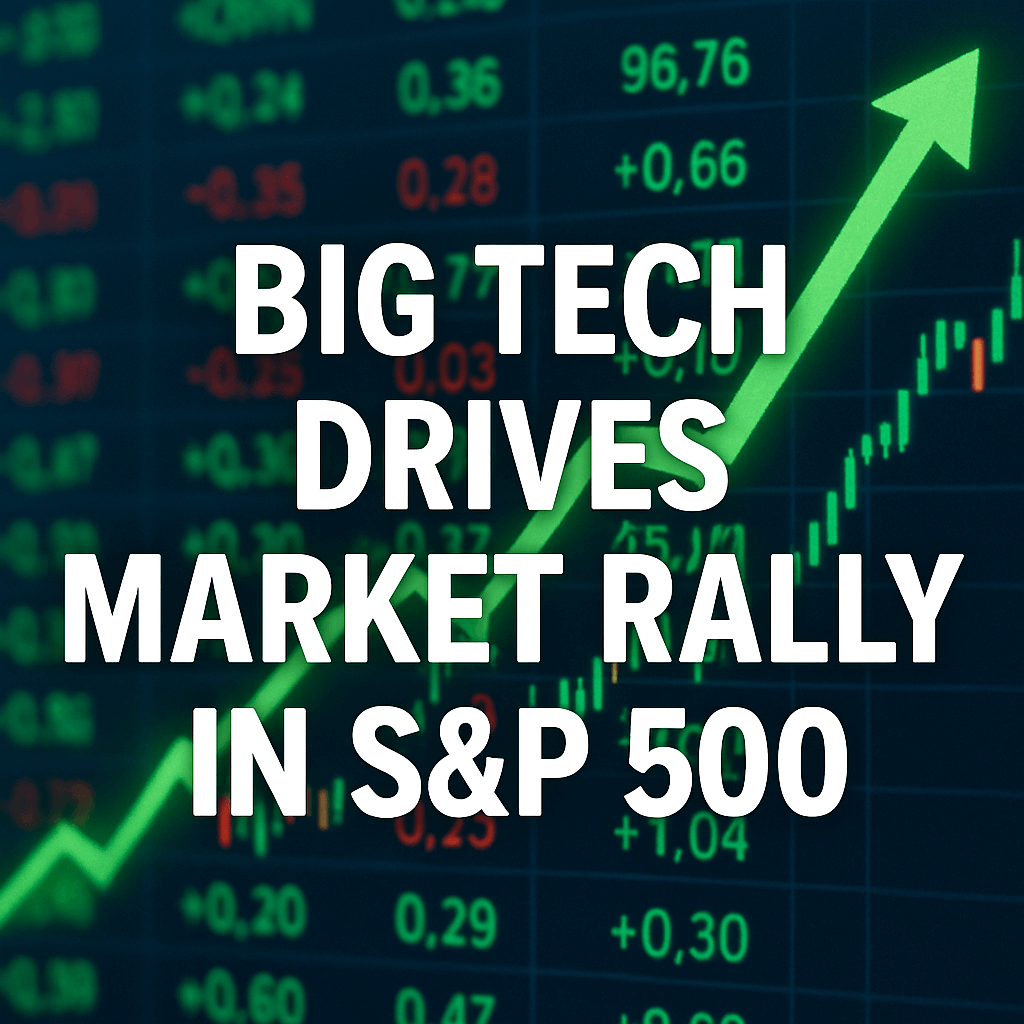Big Tech Drives Market Rally in S&P 500

The technology sector, previously culprit in dragging the S&P 500 to the brink of a bear market in April, is now positioned as a key driver in the recovery of US equities. As of last week, Nvidia Corp. capped off a robust earnings season for Big Tech, showcasing a resilient outlook for revenue even amidst US-imposed restrictions on semiconductor sales to China.
Current Performance and Sector Recovery
With Nvidia and Microsoft Corp. rallying close to their all-time highs, market participants are increasingly bullish on the tech sector’s capacity to support a broader market rebound. According to Brett Ewing, chief market strategist at First Franklin Financial Services, “I feel really good about tech coming out of this earnings season. There’s still more gas in this tank.” The S&P 500 Index is currently within 4% of its record peak reached in February, largely attributed to diminishing trade tensions between the US and its key trading partners, coupled with resilient demand for cloud computing services, software applications, electronic devices, and digital advertising.
Market Cap and Leadership of Tech Giants
In a notable turnaround, Tesla Inc. has surged by 56% since the S&P benchmark hit a low on April 8, with Nvidia and Microsoft recording gains of 40% and 30% respectively. This recovery has elevated a Bloomberg index of the so-called “Magnificent Seven” stocks—Nvidia, Microsoft, Tesla, Apple Inc., Alphabet Inc., Amazon.com Inc., and Meta Platforms Inc.—which outperformed the broader S&P 500 index over the past two months. This shift is crucial as the seven giants represent approximately one-third of the S&P 500’s total market capitalization and contributed to roughly half of the S&P’s 19% rally from its April lows.
Market Sentiment and Future Outlook
Despite this positive momentum, the group still lags behind the S&P 500 year-to-date, presenting a rare occurrence in the last decade. Shares of Apple and Amazon, which increasingly face tariff-related risks due to their product importation dependencies, have moderated the overall performance of this cohort. Ewing notes, “Buying the tech dip will be a theme throughout the year. There’s still a lot of money on the sidelines that needs to be put to work.”
Risks and Market Headwinds
The shadow of tariffs and lingering uncertainty tied to previous administration policies continues to be a significant overhang on the market. On a recent Friday, the S&P 500 dropped over 1% after former President Trump accused China of breaching a bilateral agreement to relax tariffs, alongside reports of impending broader restrictions targeting the tech sector. Although the index managed to recover most losses by day’s end, market sentiment remains tenuous.
Adding to the cautious outlook, the tech sector’s rich valuations pose a concern. The Magnificent Seven index trades at approximately 30 times projected earnings, compared to the S&P 500’s current valuation of 21 times projected earnings—a rise from 18 times earlier this April. Barry Knapp, managing partner at Ironsides Macroeconomics, warns against over-exposure to Big Tech. He notes, “Being overweight on tech here borders on recklessness,” advocating a diversified approach focused on industrials, materials, energy, and financial sectors in anticipation of a capital expenditure recovery in the latter half of the year.
Growth Catalysts and Projections
In contrast to Knapp’s cautious stance, analysts at Truist Advisory Services are optimistic, expecting Big Tech to lead the overall market higher through the remainder of 2023, particularly as spending on artificial intelligence technology accelerates. Notably, Meta Platforms recently raised its capital expenditure forecasts for the year, and Microsoft signaled intentions for increased investments in their upcoming fiscal year, alleviating concerns that these tech giants might pull back in spending after years of expansive outlays.
According to Keith Lerner, Truist’s co-chief investment officer, while earnings may remain flat, the downside risks are less severe than previously anticipated. The profit growth estimates for the Magnificent Seven in 2025 are steady, projected around 15%, aligning closely with pre-earnings expectations and significantly higher than the projected growth for the broader S&P 500. “Investors are going to be drawn back toward these names with secular growth,” noted Lerner. “Tech could be that catalyst to see the market re-accelerate later in the year.”
Conclusion
As Big Tech continues to navigate complex geopolitical landscapes and valuation pressures, its performance will remain a crucial determinant of the broader market’s trajectory. Investors should monitor these developments closely as they strategize on their portfolios and capitalize on the opportunities that arise in a post-pandemic market recovery.
Source: fortune